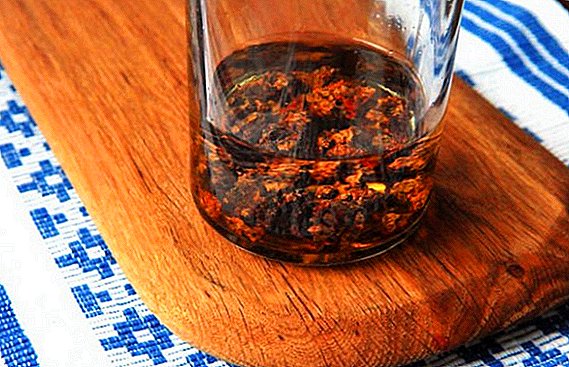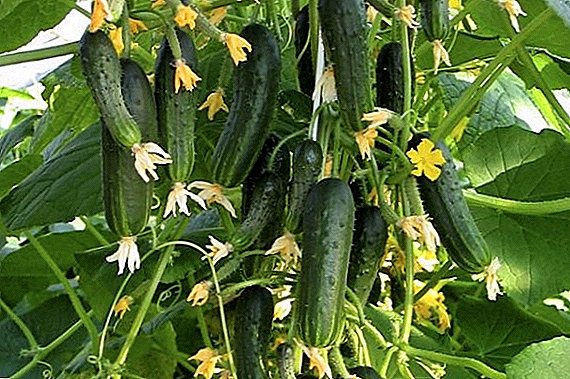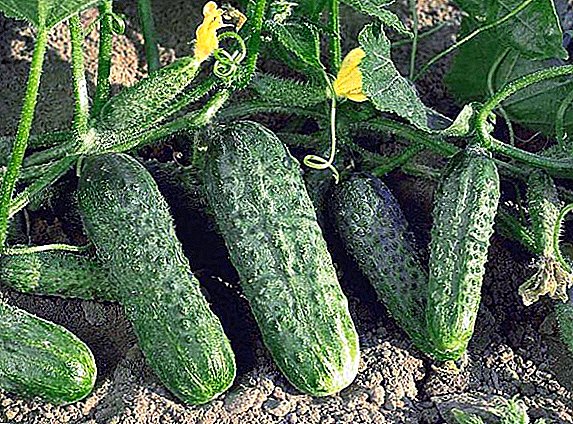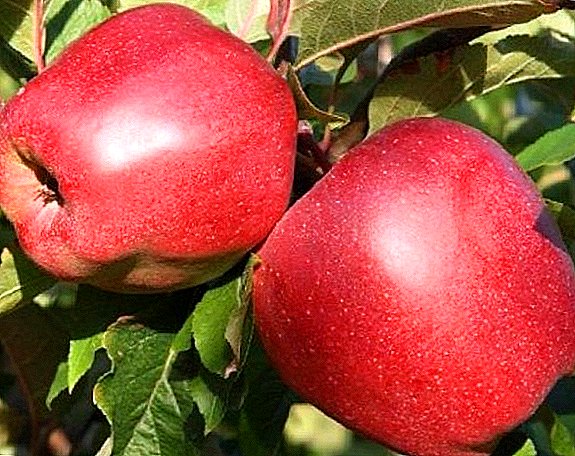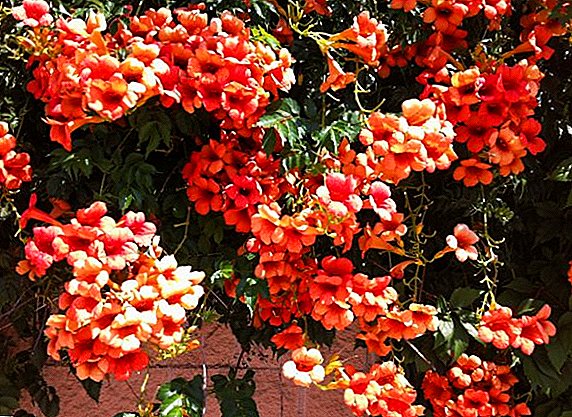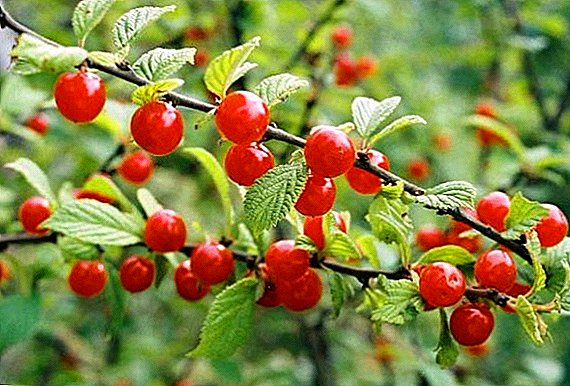 Attractive appearance of gladioli allowed these flowers to win universal recognition of gardeners from different countries. However, if in the southern regions their cultivation can be called a rather simple task, then in conditions of a more severe climate, certain problems often arise. Residents of the Urals also have to face the latter, so in this article we will tell about the nuances of preparation, planting and further care of graceful gladioli in this area.
Attractive appearance of gladioli allowed these flowers to win universal recognition of gardeners from different countries. However, if in the southern regions their cultivation can be called a rather simple task, then in conditions of a more severe climate, certain problems often arise. Residents of the Urals also have to face the latter, so in this article we will tell about the nuances of preparation, planting and further care of graceful gladioli in this area.
The best varieties for growing in the Urals
In recent years, domestic and foreign breeders have put a lot of effort into breeding new hybrids of gladioli, the description of which also mentions improved winter hardiness. Due to this characteristic, many varietal variations today are successfully cultivated under adverse conditions, in particular, in the Urals, with a harsh continental climate and uneven precipitation.
Find out which varieties of gladioli are the best, how to plant and store them, how to care for gladioli, how to grow them in containers.The most successful in this case will be the following varieties:
- "Oasis". Differs original and quite attractive color of relatively large flowers - lime color interspersed with pink. The leaf plates are narrow and thin, and the stem grows up to 140 cm. A bouquet of these gladioli always looks bright and unusual.
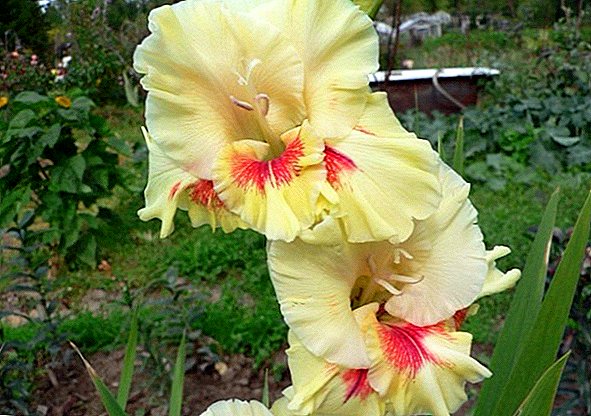
- "Benvenuto" - Another good grade of gladioli. In this case, a beautiful pale pink bloom can be observed from mid-summer until the end of warm days. Large inflorescences often reach 40 centimeters in length, with a height of about 130 cm of the plant. Many gardeners grow this variety not only for decorating the site, but also for decorating bouquets.
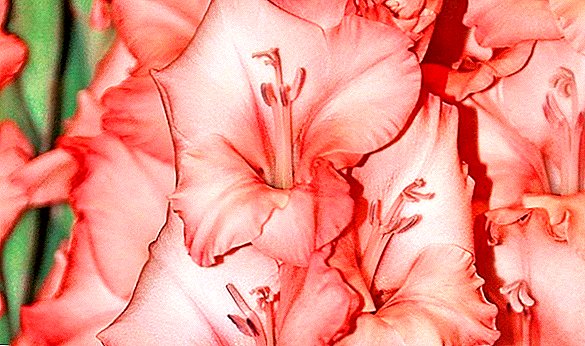
- "Sonata". The variety is somewhat lower than the previous ones (the stems with lilac flowers grow no more than 100 cm in height), but it is valued by gardeners for their decorativeness. It can be grown up both for decoration of a site, and for cutting.

- "Vista". The color of these gladioli is reminiscent of the color of "pansies", and they reach a height of 130 cm. In addition to noticeable and attractive colors, thin leaves painted in a pleasant pale green color are immediately thrown into the eyes of those around you.
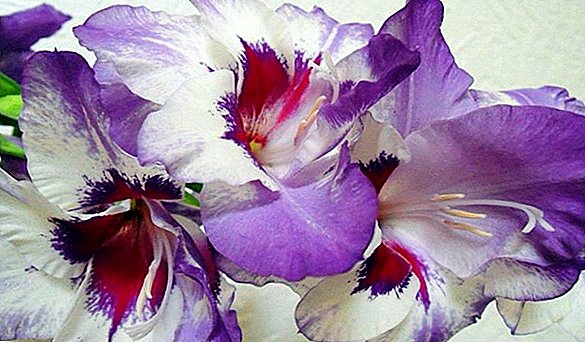
- Azurro - ideal for cutting into bouquets. The saturated red color of flowers always attracts attention to these gladioli, which grow up to 100 cm in height. Like many other varieties, leaf plates are thin and narrow.
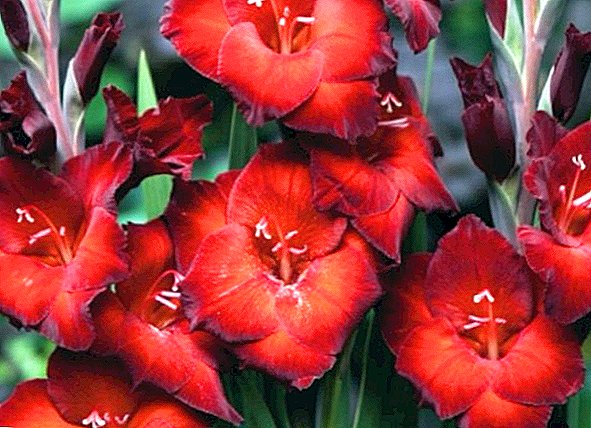
- "Otsilla" - A representative of a group of the most refined and graceful gladioli, who feel great in the Urals. The flowers of this variety are characterized by incredible lightness and airiness, which is largely due to the snow-white color. A comparatively weak stem, which cannot always withstand all inflorescences, is considered to be a slight drawback to these gladioli. Because of this, you have to tie up flowers.

- "Passos". The variety is characterized by bright and large flowers, combining rich purple and delicate lilac shades. Corrugated petals only add extravagance to the plant.

- "Gagarin's smile". The flowers are pink with a bright red center. Differ in good resistance to adverse conditions of growth. These plants can be called an ideal option for the Ural garden.
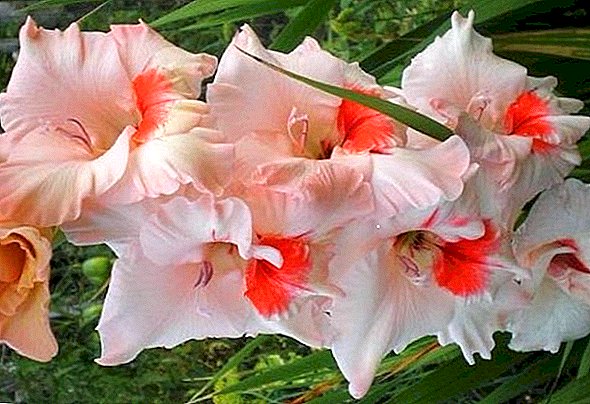
- "Cook". Gladioli are excellent for early cultivation in the Urals. Their pale pink bloom can be observed in the second half of July.
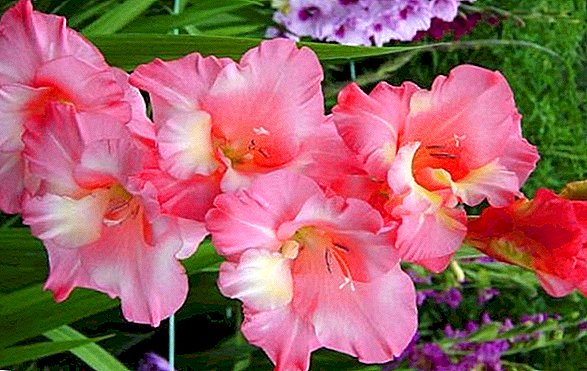
Did you know? Today, gladiolus is just a beautiful ornamental plant, but there was a time when the flower was endowed with magical properties. Thus, in the ancient Roman state, the gladiators considered him to be their amulet and wore an onion as an amulet guaranteeing victory in battle.
When to get and how to prepare the bulbs
Preparation of planting material for landing on the site is always a very crucial stage, and if it is not about the most suitable growing conditions, then the relevance of all preparatory activities increases significantly.
In the case of gladioli, the correct preplant preparation of onions is a prerequisite for early and lush flowering, because the earlier they are “woken up”, the faster the plants will begin to grow. For planting in the Urals, they begin to engage in such preparation two weeks before the planned date of planting in open soil.
Consider the sequence of all necessary preparatory activities:
- To begin, carefully inspect all the bulbs to exclude specimens damaged by diseases or pests.
- Then carefully but very carefully clean the selected planting material from all damaged and dry upper flakes.
- Spread them in a single layer on clean, dry trays and send them to a warm room with ambient lighting.
Why and how to germinate
Some gardeners prefer not to waste time and immediately plant gladiolus bulbs on their land, but there is another option - pre-germination of planting material. In the latter case, it is possible to achieve earlier growth and flowering of plants, so it makes sense to think about this method of preparation. There are several basic options for performing the procedure:
1. Growing or sprouting potato type. Probably the easiest option is to place pre-prepared onions or children of gladioli in a bright place (be sure to bottom down).
Important! Any possible exposure to moisture should be excluded, otherwise the root system will start to grow ahead of time.2. Sprouting in wet sawdust or straw. Pour 2 cm of the selected material into a transparent plastic bag and moisten it a little, but so that when compressed in a fist the moisture does not stand out. Next are laid out and prepared gladiolus bulbs, evenly spread over the entire surface. Now the most interesting thing: having typed full lungs of air, it is necessary to exhale it into a slightly opened package 5-10 times, thereby filling the space in it with carbon dioxide. After that, you can tie the bag and place it on or near the window sill, and as soon as the arrows appear to the top, you can proceed to watering and feeding planting material in an already open bag.
3. Planting onions in ordinary soil. This procedure is carried out after germinated shooters reach 5 cm height. It is desirable to place each onion in a separate container (for example, in a 0.5 l disposable plastic cup), at the bottom of which a drainage layer must be laid in the form of expanded clay or any other material with similar properties. On top of it pour the soil mixture itself and place it onion gladioli.  At the end of all preparatory activities, approximately 5 hours before planting in open ground, it is advisable to place already sprouted or only prepared onions in a nutrient solution of microelements or wood ash. As for the exact time of landing in the ground, then it all depends on weather conditions and the warming up of the land in the area designated for cultivation of the specified flower culture.
At the end of all preparatory activities, approximately 5 hours before planting in open ground, it is advisable to place already sprouted or only prepared onions in a nutrient solution of microelements or wood ash. As for the exact time of landing in the ground, then it all depends on weather conditions and the warming up of the land in the area designated for cultivation of the specified flower culture.
Did you know? All modern varieties of gladiolus are due to W. Herbert, who at the beginning of the 19th century crossed several South African species. It was in those days that these plants began to interest humanity as a decorative element, without losing its relevance today.
Choosing a place on the site
There are no serious differences in the choice of the location of the growth of gladioli in the Urals and in the southern territories. In this matter it is worthwhile to focus more on the minimum culture requirements expressed in:
- the need for deep occurrence of groundwater, which will exclude the possibility of fluid accumulation at the root system of the plant and their rotting;
- good sunlight coverage of the site, which is not surprising, given the tropical origin of gladiolus;
- high nutritional value of soil rich in humus and mixed with river sand;
- the absence of a full shade, which can adversely affect the flowering splendor;
- the absence of drafts and strong winds (if necessary, it is better to immediately fence the landing).
 In addition, it is very undesirable to plant gladioli in the places where they grew last year, or turnips, horseradish, radishes or cabbage were their predecessors.
In addition, it is very undesirable to plant gladioli in the places where they grew last year, or turnips, horseradish, radishes or cabbage were their predecessors.Soil preparation
Having prepared the onion flowers for planting and choosing the right place for them to grow, it's time to prepare the substrate and plant the plant directly on the Ural land. First of all, pay attention to the acidity of the soil.
The ideal option for gladiolus would be a value in the range of 6.5-6.8 pH, but, of course, it’s impossible to determine the exact numbers by eye, for this special laboratory methods are provided.
Find out what soil types exist, how to determine soil acidity, how to deoxidize the soil, what acidity is optimal for different crops, how to fertilize different soil types correctly.However, if you already know about the increased acidity of the soil in your area, then in order to avoid problems, it is desirable to pre-add crushed egg shells to the soil, at the rate of 200 g per 1 m², or to mix lime powder with it evenly.
As for the other aspects of the composition of the soil mixture, black soil and light loam are best suited for successful cultivation of these flowers, while planting on heavy and clay substrates will not bring the desired result.
Important! On overly clayey areas, sand and humus are usually added to the soil (during digging), and on sandy ones - clay.Garden beds for gladioli can be prepared in autumn. To do this, they dig, remove all weeds and fertilize in the form of phosphorus or potassium compounds per 50 g per 1 m².
 In addition, organic fertilizing in the form of 8-10 kg of humus mixed with 50-100 g of ash, introduced during the digging process, will be no less useful. Before direct planting of seedlings, potassium sulfate or potassium magnesia is additionally used.
In addition, organic fertilizing in the form of 8-10 kg of humus mixed with 50-100 g of ash, introduced during the digging process, will be no less useful. Before direct planting of seedlings, potassium sulfate or potassium magnesia is additionally used.When and how to plant gladioli in the Urals
Based on the weather conditions, the dates of the gladioli landing in different years may shift somewhat, but on average the second half of May will be most suitable for the Urals. Usually, up to this point, the soil already has time to warm up by the sun, and the possibility of repeated frosts is minimized.
Learn how to protect the garden and the garden from frost.Given the short duration of the summer period for this climatic region, late-planted plants may not give flowers at all, so you should still be guided by temperature indicators. If the air temperature during the week does not fall below +18 ° C, and the soil has already managed to warm up to + 15 ... +17 ° C - it's time to start planting gladioli. The technology for this task is as follows:
- On the prepared bed you need to make grooves and pour them with water (you can with phytosporin solution).
- A thin layer of river sand should be poured over the moistened soil (even if everything is fine with acidity at the site).
- Now is the time to plant the onions, deepening them into the ground by 5 or 10-14 cm (here the size of the planting material is taken into account: the larger the diameter of the bulbs, the greater will be the depth of their placement). If on the territory of a heavy substrate, then the bulbs deepen by 8-9 cm less than usual. The minimum free space between neighboring plants should be 15 cm for large onion and 5 cm for children, and the aisles usually take about 20 cm (the farther apart the flowers are, the easier it is to care for them).

Did you know? Experienced gardeners, when determining the ideal planting depth of the flowers described, proceed from the sum of three diameters of the prepared planting material.After planting the bulbs, it is imperative that you soil the soil, which will help protect gladiolus from evaporation of moisture and the warm sun.
How to care
Proper planting of gladioli alone is not enough to produce beautiful and vivid colors. These plants require systematic care, especially when it comes to regions with a not very favorable climate. When creating a comfortable environment for your plantations, you should consider a few simple rules:
- Watering should be timely and regular, at least once a week, and the application of fluid must be done either early in the morning or late in the evening (try not to wet the leaves and flowers). For 1 m² of land should be about 1 bucket of water.
- After watering, a mandatory measure is loosening the soil (to avoid the appearance of a crust on the ground) and its mulching, which is carried out to preserve moisture in the soil.
- It will not be possible to do without periodic weeding of the soil, otherwise the weed grass will simply drown the gladioli, and they will not be able to give beautiful flowers.
- Some varieties require a garter to support, which also should not be forgotten. If you do not fulfill this requirement, then at the first gust of wind a heavy flower may break.
- Be sure to regularly inspect all plants for dried flowers or damaged leaf plates. In both cases, such parts should be immediately removed so that the plant does not lose its decorative effect.
- Gladiolus, like many other ornamental plants, very positively respond to the introduction of fertilizer into the soil. The first time the feeding can be performed after the appearance of the third leaf, using for this purpose urea, ammonium nitrate or ammonium sulfate. The second is carried out after the appearance of the sixth leaf, using ammonium sulfate or superphosphate. The third fertilization should coincide with the appearance of buds on gladioli, and in this case potassium chloride and superphosphate will be appropriate. The exact calculation of the dosage is carried out taking into account the initial characteristics of the soil on the site, but usually it is no more than 50-100 g of each substance per 1 m².
 Only with such care can you expect from the gladioli of mass lush flowering, which will surely become an excellent decorative element for any garden.
Only with such care can you expect from the gladioli of mass lush flowering, which will surely become an excellent decorative element for any garden.When to dig and where to store the bulbs in the winter
When growing gladioli in a rather harsh climatic conditions of the Urals, all the flowers should be cut off in early September, so that the onion leaves in the ground have enough nutrients (on average, this process takes about a month).
Important! Cutting must be carried out according to all rules, so that the plant will have at least 4 leaves, completely covering part of the peduncle.After four weeks, that is, at the end of September or the beginning of October, you can safely proceed to digging out the gladiolus bulbs and drying them further, but with the preliminary removal of all unnecessary parts (for example, a piece of stem or a dry root). Before drying, the bulb must be neat and clean.
Some gardeners recommend additionally pickle the dug-out planting material with toxic chemicals (for example, "Aktellik" or "Maxim"), which will help get rid of thrips, other pests and pathogens. After this treatment, the bulbs can be sent for a two-week drying at a temperature of about +20 ° C.
You do not need any special room, you can simply place a box with bulbs under the bed or in the closet. After 14 days, with a sharp knife you need to remove the old onion from the bottom, that during normal drying will not be any difficulty. If this procedure fails, you just need to dry out the future planting material.  Dried and properly prepared for storage bulbs are placed in rag bags, packaging by varietal characteristics. It is not recommended to use glass containers for storage of gladioli, especially when they are covered with lids, since the planting material will simply deteriorate without air access.
Dried and properly prepared for storage bulbs are placed in rag bags, packaging by varietal characteristics. It is not recommended to use glass containers for storage of gladioli, especially when they are covered with lids, since the planting material will simply deteriorate without air access.
Learn how to grow dahlias, allium, tulips, proleski, daffodils, hionodoksy, lilies, montbretias, licoris, snowdrops, candyk, crocuses, ixia, marshmallows.A good place to store the bulbs is the bottom shelf of the refrigerator, but only if there are not many of them. Если у вас достаточно материала, то в холодильнике можно разместить только самые ценные сорта, а все остальные разложить в овощные ящики и опустить в подвал. В любом случае, температура в хранилище с гладиолусами должна находиться в пределах +2… +10 °C, правда, если луковицы были вызревшими и правильно подсушенными, то они смогут нормально храниться даже при +15 °C.
As for the optimum level of humidity, to maintain it, it is enough to place a bucket of water next to the boxes. Do not be lazy at least once a month to check the safety of their flowers, in time discarding the sick and spoiled copies.
Observing all the above recommendations on planting and caring for gladioli, even the harsh climate of the Urals will not be an obstacle to obtaining beautiful flowers, the main thing is to choose the right variety.











